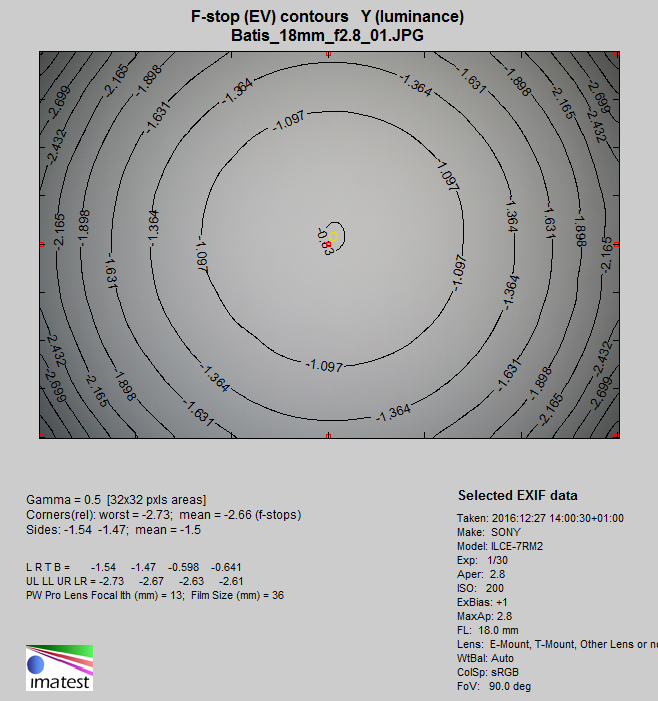Carl Zeiss Batis 18 mm f/2.8
8. Vignetting
First, let’s check the vignetting performance on the smaller APS-C sensor; appropriate thumbnails you can find below.
| A7R II, APS-C, f/2.8 | A7R II, APS-C, f/4 |
 |
 |
Please Support UsIf you enjoy our reviews and articles, and you want us to continue our work please, support our website by donating through PayPal. The funds are going to be used for paying our editorial team, renting servers, and equipping our testing studio; only that way we will be able to continue providing you interesting content for free. |
- - - - - - - - - - - - - - - - - - - - - - - - - - - - - - - - - - - - - - - - - - - - - - - -
Significant physical dimensions of the lens allow it to fare very well in this category. The vignetting is visible only at the maximum relative aperture where it reaches 26% (−0.85 EV). By f/4 and higher apertures it keeps the same level of 17% (−0.52 EV).
After passing to the bigger, full frame sensor there are much more problems and photos below show them clearly.
| A7R II, FF, f/2.8 | A7R II, FF, f/4 |
 |
 |
| A7R II, FF, f/5.6 | A7R II, FF, f/8 |
 |
 |
At the maximum relative aperture the brightness loss in the frame corners amounts to 60% (−2.63 EV). Unfortunately, such a value must be called only huge. Still, like in the case of the APS-C sensor, it’s enough you close down the lens by one f-stop and the level of vignetting is reduced to 45.6% (−1.76 EV). Further stopping down is not especially helpful and from f/4 that aberration remains on the same, still distinct level of 42% (−1.57 EV).







